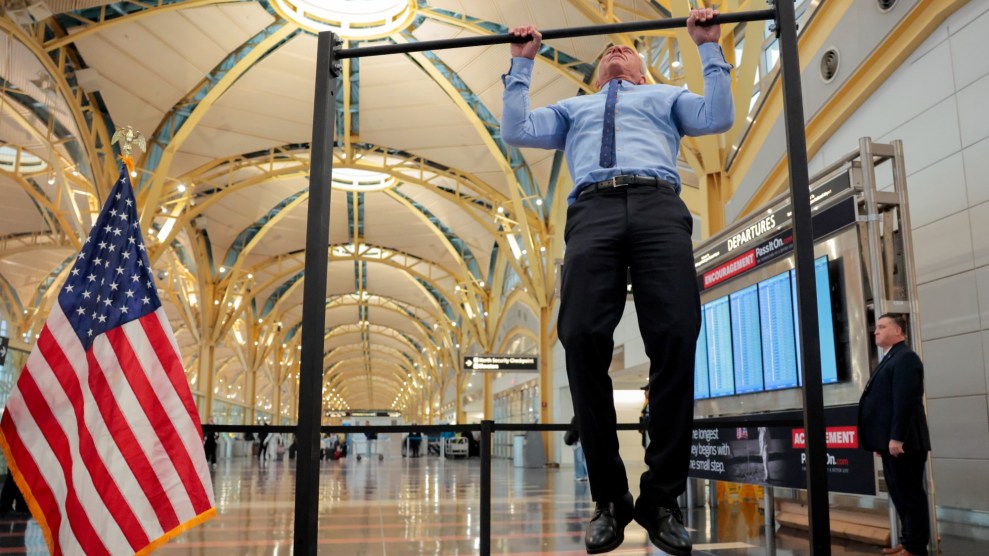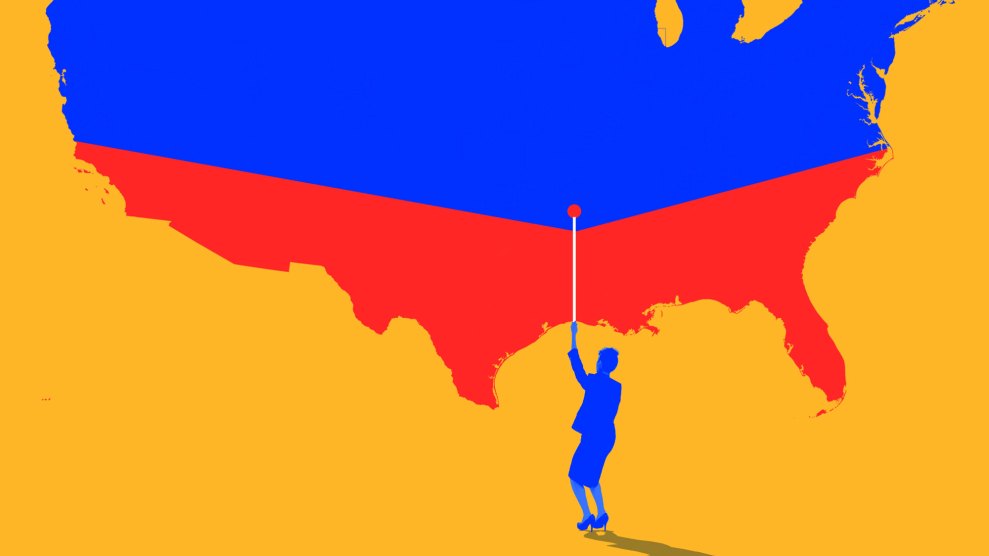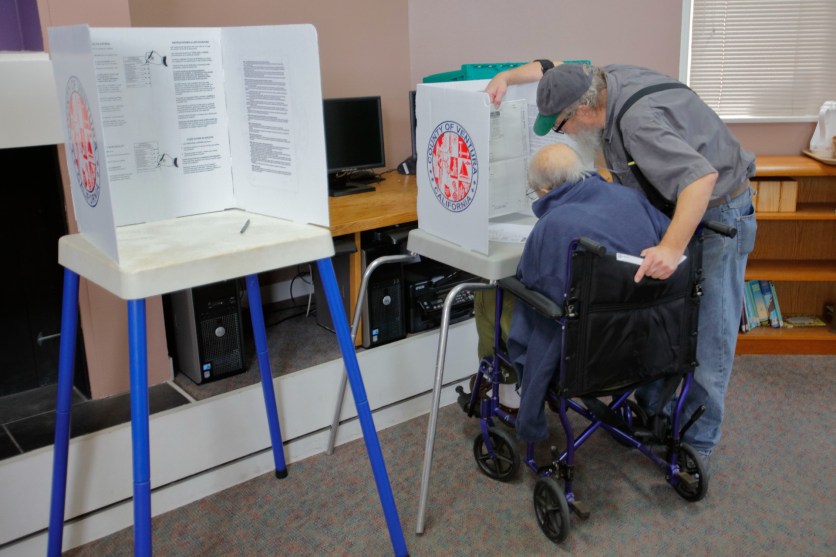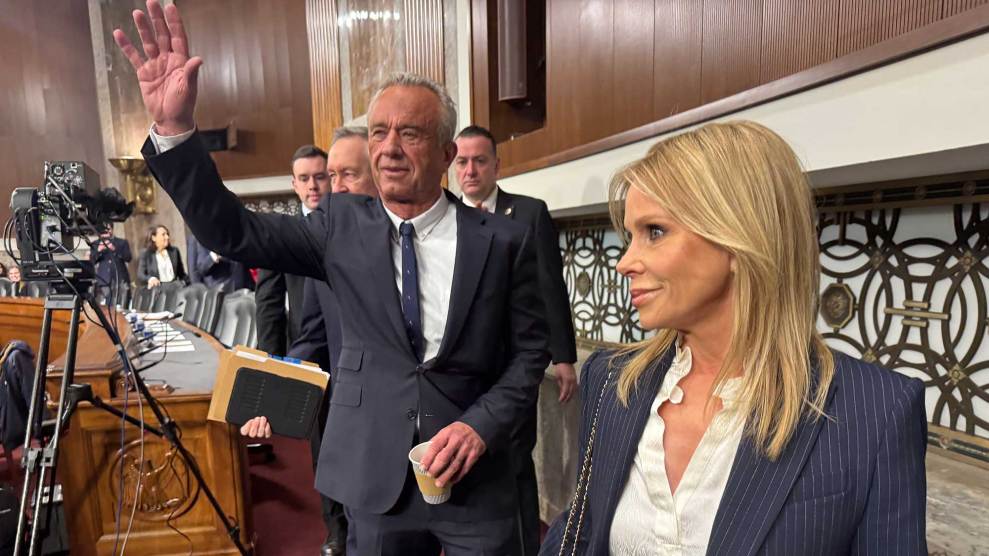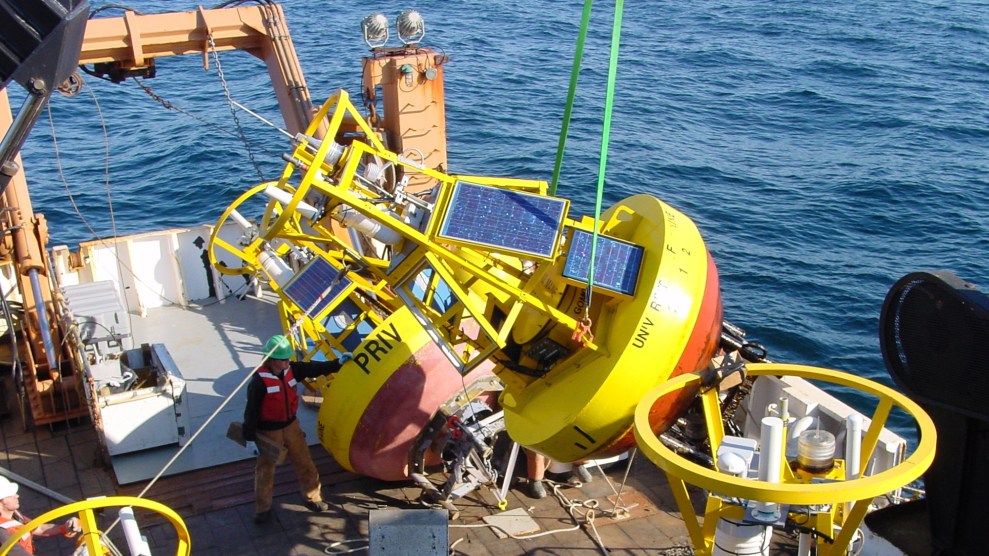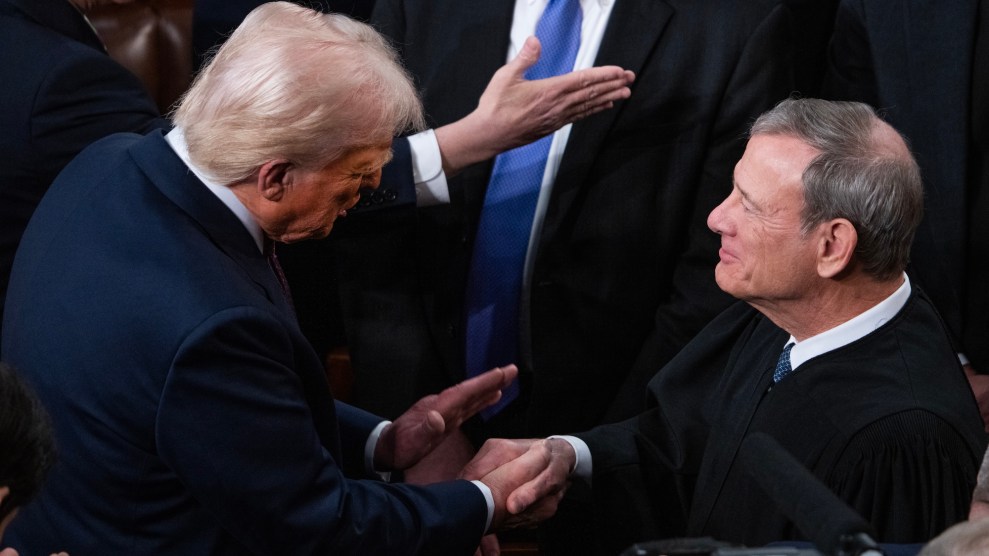
Illustration By: Brian Cronin
Two years ago my father phoned to tell me that a new prescription from his oncologist—what amounted to his last line of defense against the cancer he had been battling for years—was beyond his reach financially. His previous treatment had worked far better for him than for the average patient with his condition, but its efficacy had dwindled during a long sabbatical from drug treatment, during which he underwent a major surgery. Now faced with either an old drug regimen that no longer worked or a prohibitively expensive new drug, his only realistic option, he told me, was to forgo further medication. In other words, he was prepared to die. I had a hard time accepting this. With his engineer’s mind, my father had managed to navigate his way through the murky realms of conflicting treatments and doctors’ opinions, keeping himself alive far beyond his original prognosis. At the time of his call to me, he was fit and strong, and his cancer—which had been stabilized by the previous treatments—was currently progressing at an almost imperceptible rate. Yet I knew what he probably did not: that his end from this particular disease would be, in the words of an oncologist friend, “one of the worst deaths possible.” If there was any way around this, any way at all to spare or delay the suffering that lay ahead, I was prepared to try it.
Two years later, and a few months after my father died, my mother took the train cross-country to visit me in California. Somewhere in Nebraska—in the course of a 10-hour Amtrak delay—Congress passed the Medicare drug bill. During the dreary wait for railroad repairs, a fellow passenger asked my mother what she thought of this bill. She didn’t like it, she said, at which point the passenger confessed to being an employee of AARP, and added that the AARP employees didn’t like it any better themselves. The consensus-of-two was that this was a welfare plan not for the elderly or the sick, but for the phenomenally healthy pharmaceutical industry.
Somehow, in hearing my mother tell this story, the saga of my father’s misadventures in the American health care system came full circle. Triggered by his call two years earlier, I had become something I had never imagined—a smuggler and a fraud—in pursuit of that which my father had never conceived of upon retirement 12 years earlier: a prescription costing so much that it would justify the purchase of an expensive supplemental drug-insurance plan. My family of immigrants, once eager for a piece of the buoyant American economy, found ourselves wondering if we would have fared better in virtually any other industrialized country on earth, where the impossible choice between bankrupting ourselves, breaking the law, or forgoing lifesaving treatments did not exist.
“I don’t know why Americans resent paying taxes,” my father often said during my childhood. “They don’t seem to understand that taxes provide them with things they need.” By the end of his life, I think he resented taxes himself, perceiving that too much of the wages of the middle class was spent on corporate entitlement programs, including those aiding the $235 billion-a-year global pharmaceutical industry. By the time of his death, the business of prescription drugs had become the most profitable industry in America, with a staggering campaign war chest of $29.4 million in 2002—enough funds to employ in excess of 600 lobbyists, more than one for every member of Congress, and enough power to make elections and legislation in its own image.
The new drug my father’s oncologist was prescribing for him was well known to me (for legal reasons, I will omit its name and the manufacturer’s name), for it had a fearsome reputation from decades earlier. How expensive could this drug be, I wondered, when all the research and development had been done 40 years ago, at a fraction of the modern costs? A hell of a lot, was the answer. I still don’t know why. But in my father’s case, it was about $47,000 a year, with the potential to triple, based on his clinical response, to $141,000 a year. At this rate, in seven years, he could conceivably have spent a million dollars. Although he had profited from decades of employment in North America, he had not profited well enough to pay for that, and he was realistic enough about his medical future to resist becoming “spent out”—the current jargon for those who have anted up all in pursuit of staying alive—leaving him and my mother financially ruined (at which point, ironically, they would have been eligible for free drugs).
Like millions of frustrated others, I turned to the Internet, hoping to find some way of acquiring what my father needed. There was a whole cadre of us out there, I learned, seeking drugs for ill parents, or spouses, or children. There were those looking, and those giving—including the survivors of the deceased, who were willing to pass along the remnants of no-longer-needed prescriptions. Like addicts, we identified ourselves by first name only, and our missives were sad and apologetic. “I am sorry,” wrote a fellow sufferer, who had originally thought he could help me with my father’s drug. “I looked everywhere I could think of and couldn’t find any _____. It must have been thrown away or used, I guess. My dad tossed a ton of stuff. I think I was too disturbed by my mom’s death to rigorously look through it at the time. I am very sorry.”
Upon my father’s retirement in 1991, he automatically became covered by Medicare and chose to purchase supplemental AARP hospitalization insurance. He decided against the supplemental prescription-drug insurance because, as he later told me, he could not conceive of any drug costing enough to justify paying $2,400 a year for it. For me, one of the more painful aspects of our predicament was the fact that my father, a son of the Depression and of World War II, prided himself on always being prepared for the bleakest prospects the future might deliver. But not even his darkest imaginings could prepare him for the breathtaking ascent in the price of drugs—costing Americans $213.4 billion in 2003—which he regarded as a personal failure of his preparedness skills.
Because more than a third of Medicare patients have no prescription-drug benefits, Congress enacted the Medicare drug bill last December, at an estimated cost of $400 billion over the next decade. In the weeks following its passage, it became a matter of morbid curiosity to me to assess whether or not the new law would have solved my father’s problems. If he had survived, here is what he might have looked forward to: After paying a $420 annual premium, plus a $250 annual deductible, the government would have covered 75 percent of his prescription costs up to $2,250; he would then have been responsible for all payments up to $5,100, at which time the government’s catastrophic aid would have kicked in, paying 95 percent of his drug expenses. So I estimate that he would have been responsible for $6,115 of his $47,000 cancer drug. Would he have paid that much? I can’t say for sure. Locked into a fixed income that was in decline along with the stock market, he might have decided against it.
Generally speaking, if my father had been a very low-income senior, he might have fared better under the new plan, unless he lived in a state where Medicaid had been paying for prescriptions without charging him deductibles or premiums. If he had been a middle-income senior with modest drug costs, he would probably have fared no better and might have ended up paying more in annual premiums than his drugs cost. If his expenditures had fallen into the “doughnut hole,” between $2,250 and $5,100, he would have found little relief. Ironically, his worst-case scenario under the new plan would have been a complete reversal of what had been the best-case scenario, i.e., a retiree who still enjoys employer-paid health coverage. Such people were once the lucky few; but under the new legislation, all 3.8 million of them stand to lose that coverage entirely. And those whose new Medicare drug bene-fits will be provided via privately run programs could find themselves denied expen- sive drugs, say, ones that cost $47,000.
So who will fare well? Doctors and hospitals will get a boost, because a scheduled cut in their Medicare payments has been eliminated. The insurance companies will receive new subsidies designed to encourage them to cover seniors and the disabled. But the really big winners will be the drug companies, who are estimated to see a 9 percent increase in sales, or $13 billion in additional profits per year.
After a lot of fruitless trolling, my Internet searches eventually led me to a pharmaceutical company overseas that made the same drug my father needed under a different brand name for roughly $1,200 a year—absurdly cheaper than the $47,000 a year the American company was demanding (and roughly one-fifth what my father would have paid under the new Medicare bill). What would you do? Well, I did it too—and can now add drug smuggling to the dubious accomplishments on my résumé.
My family was not alone. For years, patients with AIDS or cancer have been buying drugs from Mexico, either because these drugs are not available in the United States, or because they are available more cheaply south of the border. More recently, Americans have begun wandering north. The first organized busloads of drug-buying American seniors crossed into Canada in the mid-1990s, and currently, between 1 and 2 million Americans of all ages buy Canadian drugs via the Internet. It’s easy to see why. Cholesterol-lowering Lipitor costs $127 in the United States, $60 in Canada; the anti-arthritis drug Celebrex costs $106 here, $41 there.
Having spent much of my adult life traveling and working overseas, and having many personal contacts in foreign countries, I had the means to procure a doctor in the country that manufactured the drug, get a prescription, fill it at a pharmacy there, and bring it home. We had concerns, though. I worried that U.S. Customs, or even airport security, might ask what I was doing with so many foil-wrapped packets of pills. To offset this possibility, I opened all the packets and emptied their contents into prescription bottles I had brought along. Yet this solution raised another concern: the memory of a news story a few years ago about an American woman trapped in a hellhole of an overseas jail because she had prescription drugs in mismatched bottles. Luckily, when smuggling my father’s prescription, no one ever stopped or questioned me, and aside from some sweaty moments feeling like a drug runner (and hoping I did not look like one), the process went smoothly. Over time I was also able to use non-American friends as coyotes to smuggle refills.
Within a couple of months, my family’s other concern—that the foreign drug would be ineffective—proved groundless. Scans showed my father’s tumors, which had previously been advancing, were in retreat; his doctors were delighted with his response and even more tickled to learn how he had overcome the impossible limitations of the American health care system.
A few months later I discovered that we might be able to import the drug quasi-legally into the country. “We have sent ______ to the USA many times,” wrote my contact at the overseas pharmaceutical company. “We have contacted DHL and they advised that, if the doctor clearly specifies the doses in the prescription, they think there will be no problem in USA customs.”
Filled with optimism at reclaiming the status of law-abiding citizens, we sent off the money and the order. But the process took longer than anticipated. My father’s current supply of the drug was running out, and we didn’t know if an interruption in treatment would enable the cancer to renew its attack. We worried. As weeks passed and the shipment still had not arrived, we worried some more, and then split his daily dose in half, trying to eke out his supply. When the delay continued, we halved it again. Eventually, we heard from U.S. Customs that the package was being held by the Food and Drug Administration, which was not convinced of the legality of this import or of my father’s need for this foreign drug. We provided a slew of hastily improvised reasons why this formula was better than the American formula, pointedly avoiding the only real reason—because the FDA had advised us it was not a valid one—which was that the foreign version was monumentally cheaper, and the only one we could afford. The FDA was not swayed.
“We cannot vouch for the efficacy of this foreign drug,” my FDA case officer told me, as I struggled to liberate my father’s shipment. I said that I wasn’t asking them to vouch for it, because I already knew that it worked, and would be happy to send my father’s scans as proof.
The FDA likes to cite the dangers of buying drugs from abroad (even drugs made in the United States and sold in Canada), and it is true that there’s an alarming rise in counterfeit drugs—those made with fake ingredients or diluted doses of the real ingredients. But buying from American pharmacies is risky too. Recently, an AIDS patient in San Francisco discovered that his prescription for Serostim, bought through a CVS pharmacy, was actually a fertility drug. Last August, the FDA pulled 1.8 million doses of counterfeit Lipitor from American pharmacies, but not, it admits, before some was used. In December, Eli Lilly halted sales to five U.S. drug wholesalers after a counterfeit version of a drug (which Lilly would not name) was purchased. Also that month, federal agents seized some 1 million pills of counterfeit Celebrex, Bextra, and Allegra from a Florida warehouse.
So are American drugs any safer than Canadian? To date, the FDA cannot name a single American who has been injured or killed by prescriptions bought from licensed Canadian pharmacies.
Under the new Medicare drug bill, Americans are now expressly forbidden from importing U.S.-made drugs available more cheaply from overseas. Here’s how it works: I can go to Europe and buy their wine for less or go to Asia and buy their clothes for less; American corporations can buy their raw materials for less from overseas, or they can move their operations abroad in order to hire cheaper labor or management. But in a mind-boggling reversal of the American principle of supply and demand, I cannot purchase cheaper drugs and bring them home.
And try as I might, I cannot imagine who is benefiting from such laws other than the U.S. drug companies. The regulations did not protect my father—who was desperately seeking his next dose—and were conceivably killing him. When his supply finally ran dry, we tided him over with a diluted dose from the leftover prescription of a dead person. When the FDA threatened to destroy his shipment, I contacted my senators and my representative, asking for help. Dianne Feinstein’s and Lynn Woolsey’s people would not or could not give any. But Barbara Boxer’s folks did, inspiringly, and within 48 hours of my request they had sprung my father’s package from the clutches of the FDA, just in time for the Fourth of July.
In another bizarre aspect of the new Medicare drug bill, Congress has forsworn its ability to negotiate lower drug prices—because this would amount to government price controls, say some lawmakers. Never mind that by purchasing in such gigantic quantities the government could bargain for a better price—one of the working tenets of capitalism. Never mind that it already does negotiate for lower prices through the Department of Veterans Affairs. As things currently stand, the costs of best-selling drugs in America are 77 percent higher than in Canada and Europe (where prices are tightly regulated), enabling the drug companies to milk 66 to 75 percent of their profits from American consumers, who in essence subsidize cheap pills for Canadians and Europeans. Yet despite this unwitting generosity, I cannot legally visit those countries and reimport what my subsidy sold them on the cheap in the first place.
Defenders of this aspect of the bill claim that high prices are needed to counteract the enormous costs of research and development of new drugs, the much-touted $800 million-plus per new drug, spent over 10 to 15 years of testing. But is this where the pharmaceutical industry really spends its profits—that 30 to 40 percent annual return on equity that has made it the most profitable business on earth three of the last five years? Apparently not. In 2002, the nine top publicly traded U.S. companies that market popular drugs to seniors spent $45.4 billion on advertising (restricted in Canada and Europe), on marketing (including billions’ worth of free drug samples to physicians), and on administration. Meanwhile, they spent only $19.1 billion on R&D, much of which is on testing new uses (and thus new profit centers) for already approved drugs.
The marketing blitz works. Americans currently buy more than twice the number of prescriptions as Europeans, and sales of the 50 most heavily advertised drugs jumped 24.6 percent between 1999 and 2000. To offset the costs of all this advertising, the drug companies now practice rampant price inflation in the United States, escalating the retail costs of drugs each year by more than three times that of actual inflation.
Although the federal government appears unwilling to address this problem, some states are responding. In February 2003, New York sued GlaxoSmithKline, Pharmacia Corp., and Aventis for illegally inflating what the state and its Medicare recipients paid for prescription drugs through an elaborate pricing scam. Minnesota is currently suing the pharmaceutical companies (which state officials call “the other drug cartel”), because 85 percent of new drug R&D is performed by the National Institutes of Health and tax-funded university labs. Both suits are pending.
Meanwhile, the costs of generic drugs, those once trusty alternatives, are rising nearly twice as fast as brand-name drugs, due in part to the consolidation of the generic-drug industry. So even thrifty patients are joining the ranks of the one-fifth of Americans who currently cannot afford what their doctors prescribe and are forced to skip doses, or entire prescriptions, in order to make ends meet.
The pipeline for my father’s drug worked well for the remainder of 2002. But at the end of that year, a package foundered on the shores of the FDA, and not even Barbara Boxer’s people could wrestle it free. The government was cracking down on imports, and although my contact officer at the FDA was sympathetic, she nixed the few remaining loopholes almost as soon as she thought them through. In the end, she suggested that I try the prescription-drug-assistance program of the U.S. pharmaceutical company that made the drug my father needed.
We had already tried this—back in the beginning—following the advice of one of my father’s doctors, who suggested that we need not be “entirely truthful” as to his financial situation on the application. So we lied, but only a little, and were rejected. Now, a year later, we would try again, and I was prepared to be utterly ruthless this time. It did not feel like stealing because, in all honesty, I didn’t feel bad about milking a company so willing to do the same to us.
When I queried a representative at the prescription-drug-assistance program as to whether my father needed to be indigent to be accepted, she said no, not indigent. Then, miraculously, she coughed up one small brilliant truth, which in the ensuing silence I knew she was already regretting. “We don’t actually check anything you say on the application,” she told me. It was like being given a key to the City of Health. We submitted the new application for my father, the almost-indigent, and were accepted. The new drugs began arriving free from our former $47,000-a-year nemesis.
In retrospect, the whole process of getting this drug for my father—although difficult and painful—was easier for my family than it would be for many others. We were willing and financially able to travel overseas, to ask help of (or harass) our elected officials, to pour our collective energy into pioneering a solution. At the beginning of our search, my father had already spent his retirement years on what I estimate to be the equivalent of a full-time job managing his own health care—either researching it, administrating it, or undergoing it. I can’t imagine this was what he had envisioned for his golden years, but he did the work stoically, employing the same problem-solving talents he had used as a private contractor on classified Defense projects for the U.S. government. But by the time his cancer drugs began arriving free of charge, his health was failing. In the last months of his life, he could no longer negotiate a phone call to wrangle with drug companies or government agencies. He could not have managed finding alternate sources of the drug. If he had been like millions of others without the strength to help themselves, or without resourceful helpers, he would have died earlier. As many must do.
A couple of months after his free drugs arrived, my father entered the hospital for the last time. His drugs came with him and were administered until nearly the end. Amazingly, his prescription was still working, was still holding the cancer in check. The drug’s initial promise had proved well worth all the subsequent troubles and anxieties, buying him another year of life at least, so that he did not die from his cancer, the worst possible death, as I had feared. Instead, his heart quit, possibly due to problems with other treatments attendant to his condition. Or maybe he was worried about the way his full-time job managing his health care had become ours. At any rate, he was tired. He let us go.
Will the medicare drug bill help? Maybe. But I have absolutely no doubt that the smuggling will go on. The bus trips to Tijuana and Toronto will continue to deliver the desperate who have no alternative but to pay $14 for the Tamoxifen that would cost them $60 at home. The flights around the world to cheap pharmacies and drug companies will not disappear simply because the government will, beginning in 2006, pay 75 percent of drug costs for seniors spending less than $2,250 a year. One-quarter of Americans under the age of 65 have no prescription-drug benefits whatsoever, and they will remain highly motivated to search elsewhere.
Only when the prices of drugs fall into some compliance with the rest of the world will the black market subside. I wonder if the pharmaceutical giants ever calculate what would happen to their profits if they lowered their prices and wooed back all the lost consumers like my father who are fleeing to the far ends of the earth. Or if, by making drugs affordable, they might not attract all those who simply throw away their prescription slips because they cannot afford the drugs—or those who stagger their doses for the sake of economy.
In response to the high prices, a few states and municipalities are beginning to flex their bargain-hunting muscles too. Springfield, Massachusetts, is reimporting drugs from Canada for its city employees. Burlington, Vermont, plans to follow. Boston announced it will do so for 7,000 employees and retirees, saving an estimated $1 million a year. New Hampshire plans to reimport for its prison population and Medicaid patients. Initially, the U.S. government seemed to take this trend in stride. But last December, when Illinois announced its plan to save $91 million by reimportation, Governor Blagojevich was warned by the feds that such a move would be illegal. “Our law is very specific,” said a government spokesperson. “It’s not ‘will not.’ It’s ‘cannot.'” And drug companies are also being aggressive: GlaxoSmithKline warned Canadian pharmacies to stop selling to Americans or their supplies would be shut down.
In the wake of this anarchy, a few in Congress are re-examining a bill sponsored by Rep. Gil Gutknecht of Minnesota that would allow reimportation from FDA-approved facilities in 25 industrialized countries and employ technology to prevent counterfeiting. But if the pharmaceutical industry gets its way, such legislation will die—turning an increasing number of sick and desperate Americans into outlaws, or forcing them into early graves.
Meanwhile, my contact information floats in cyberspace, and I continue to get requests from the others out there with first names only who are looking for the same drug my father once used. I am more than happy to tell them what I know, how to work the system, how to break the law. “Thanks so much!” one contact responded. “(And thank goodness for email and the wonderful network of caring people such as you.) This is terrific information! Until the FDA comes to its senses, it seems that those overseas are truly our friends.”
Others write to me of their struggles when the loved ones they fought so hard to save die. “My mom was very religious, so I read the Bible. But sometimes nothing seems to help. My mom was a kind of optimistic, cheerful type person. So it is going to be hard to find something to compensate for that, as well as her caring and love for me. I mean, you don’t find that anywhere else in the world.”
No, you don’t. And that’s why the pipeline won’t close until the cheap drugs come home again.
